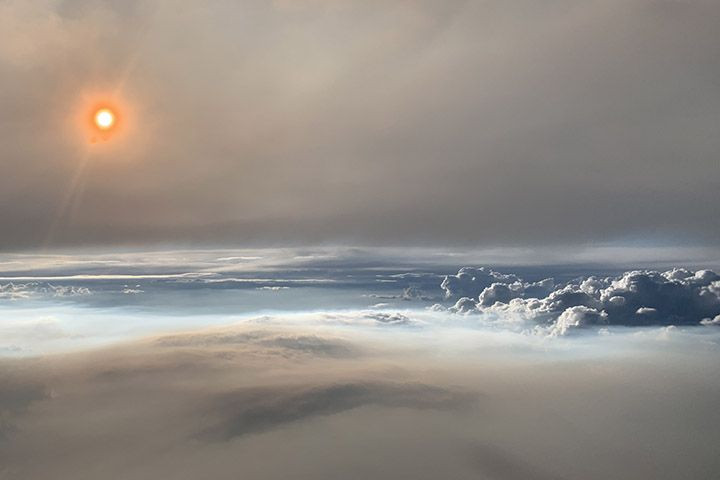Alien Structure Like Eerie 'Fire Cloud' Floats Over Washington

The NASA Earth Observatory (NEO) has captured an image that appears to be of an alien world, but it was actually the blazing heart of a fire cloud captured in skies over eastern Washington state.
The photo was taken at an altitude of about 30,000 feet as a NASA pilot flew into this fire cloud.
The image shows what is known as pyrocumulonimbus or PyroCb cloud. They are produced when heat and moisture from fires such as the William Flats Fire rise up into the atmosphere and form smoke-filled thunderclouds.
The photo shows puffy, white clouds hovering in the right side of the picture. The sun shines in the upper left corner. NEO said that the particles from the fire far below reflect the light and give the sun in the image its orange color.
“The photograph above, shot from roughly 30,000 feet (9 kilometers), shows the setting Sun shining through thick smoke at 8 p.m. Mountain Time,” NEO described the image.
“Particles in the smoke reflect light in ways that make the Sun appear orange. The photograph below shows the smoke plume (gray) that fed the pyrocumulonimbus cloud (white).”
Fire clouds may seem beautiful but they can be disruptive. When wildfire generate thunderstorms, these clouds serve like chimneys that funnel smoke and particles into the lower stratosphere. The amount of materials that get funneled is comparable to those produced by an erupting volcano.
On Aug. 2, thunderstorms with lightning ignited the wildfire at William Flats in the Colville Indian Reservation near Spokane, Washington. The fire spread quickly across more than 10,000 acres devouring brush, timber and short grass. By Aug. 15, the Williams Flats Fire has burned more than 45,000 acres.
Researchers with the Fire Influence on Regional to Global Environments and Air Quality (FIREX-AQ) investigate events such as the William Flats fire to understand the effects of wildfire smoke on air quality and weather in the United States.
NEO reported that the group sent NASA’s Douglas DC-8 jetliner, around and into a towering fire cloud over Washington.
David Peterson, a FIREX-AQ forecaster who was on the plane, captured the photos while THE instruments on the flying laboratory collected samples from the clouds.
© Copyright IBTimes 2024. All rights reserved.





















